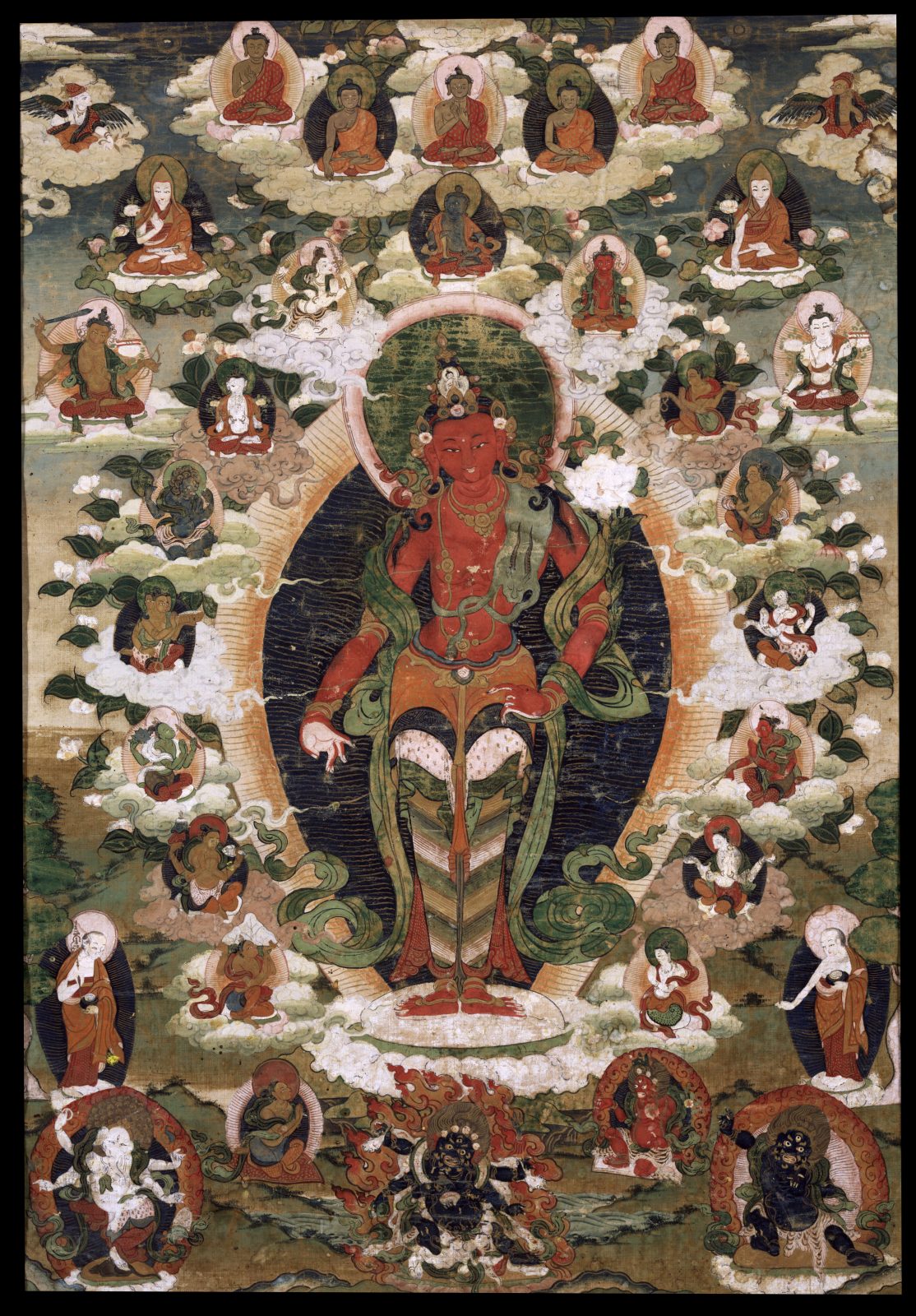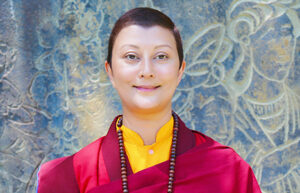

This week’s meditation session is led by Lama Aria Drolma and the theme is Rebirth. The guided meditation begins at 22:26.

Red Avalokiteshvara; Tibet or Nepal; 19th century; Pigments on cloth; Rubin Museum of Himalayan Art, gift of the Shelley and Donald Rubin Foundation; F1996.18.2
This 19th-century painting from Tibet or Nepal depicts a red Avalokiteshvara standing with his right hand extended in a gift-giving gesture while holding a lotus flower that blooms above his shoulder. His mantra “Om Mani Padme Hum,” which is said to contain all the teachings of Buddha, is the most written, recited, and repeated prayer in all of the Himalayas. It is often chanted several times every day and is inscribed on walls and stones along trails. It is believed that simply seeing these walls and stones, or mani, allows anyone traveling these paths to gain good merit.

Lama Aria Drolma is an ordained Buddhist teacher in the Karma Kagyu tradition of Tibetan Buddhism, who has completed over a decade of monastic study and meditation training. She is a graduate of the traditional Tibetan Buddhist retreat program spanning three years and three months, an advanced cloistered meditation training program at Palpung Thubten Choling Monastery, New York.
Lama teaches worldwide, leading retreats, workshops, and corporate meditation programs and is a popular guest speaker at universities and organizations. She emphasizes Vajrayana Buddhism and Buddhist principles, making them relevant in our everyday lives, helping us to cultivate loving kindness and compassion, and bringing about a transformation of contentment and a genuine sense of well-being.
Get the latest news and stories from the Rubin, plus occasional information on how to support our work.